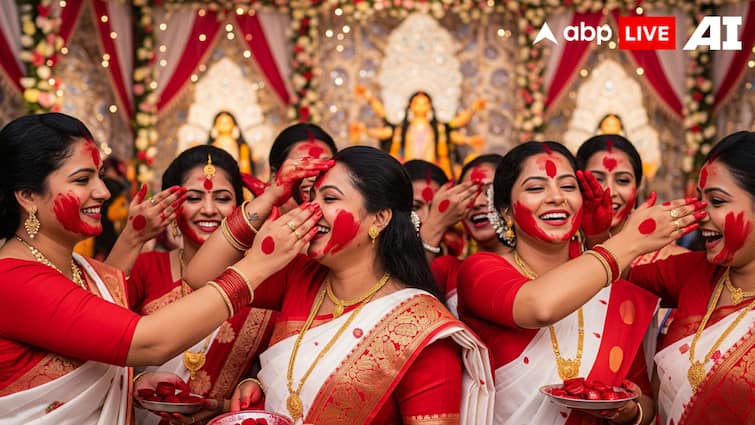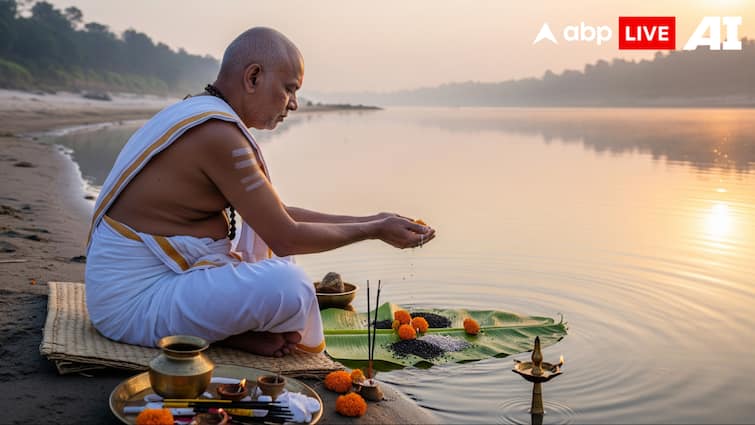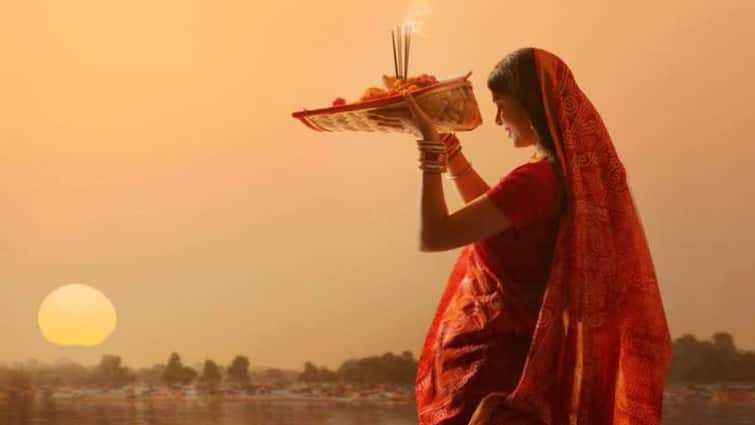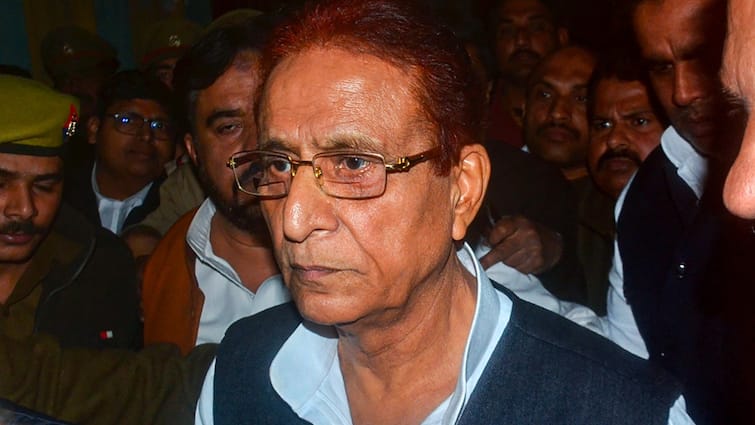Durga Puja is an overwhelming celebration of life, culture, and spirituality. As the festival draws millions across West Bengal and beyond, the rituals performed during these days remind us of the deep-rooted traditions of our country. Each ritual, from the vibrant Dhanuchi Naach to the Sindoor Khela, carries symbolism and cultural significance, connecting generations. Whether you are in Kolkata or observing from afar, these rituals bring alive the true essence of Durga Puja.
Let’s take a closer look at the timeless traditions that define this grand festival.
ALSO READ:
Bodhon
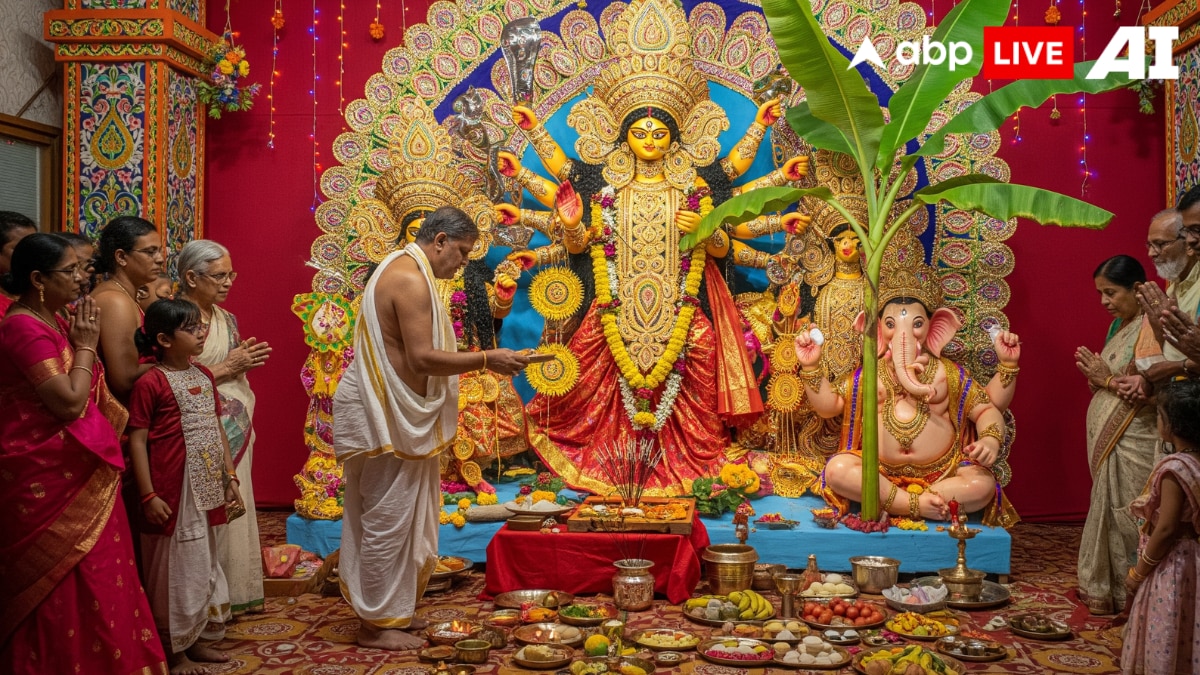 (Image Source: ABPLIVE AI)
(Image Source: ABPLIVE AI) The Bodhon marks the formal invocation of Goddess Durga on Shashthi, the sixth day of Navratri. The ritual signifies the arrival of the goddess from Mount Kailash to her parental home on earth. Devotees gather to witness priests chanting mantras while the idol is consecrated with sacred rituals. A decorated banana plant that symbolises her presence is placed beside Lord Ganesh in the pandal. This ritual is not only about inviting Durga, but also about welcoming prosperity, joy, and divine strength. Bodhon marks the official beginning of the festivities.
Pushpanjali
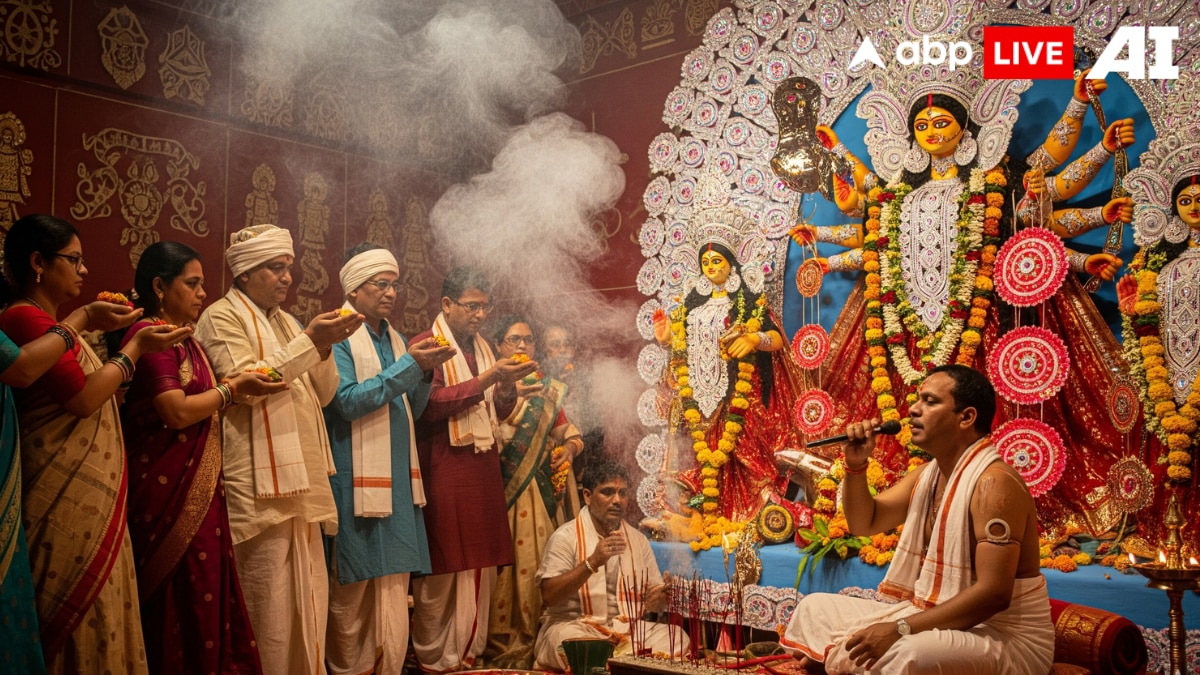 (Image Source: ABPLIVE AI)
(Image Source: ABPLIVE AI) Pushpanjali is one of the most sacred rituals of Durga Puja. It's performed mainly on Saptami, Ashtami, and Navami mornings. Devotees gather in pandals, holding fresh flowers in their palms, as priests recite Sanskrit mantras. With folded hands, devotees release the flowers at Maa Durga's feet. This symbolises the surrender of ego, pride, and negativity. For Bengalis, offering Pushpanjali is a heartfelt prayer for strength, prosperity, and protection from the evil.
Sandhi Puja
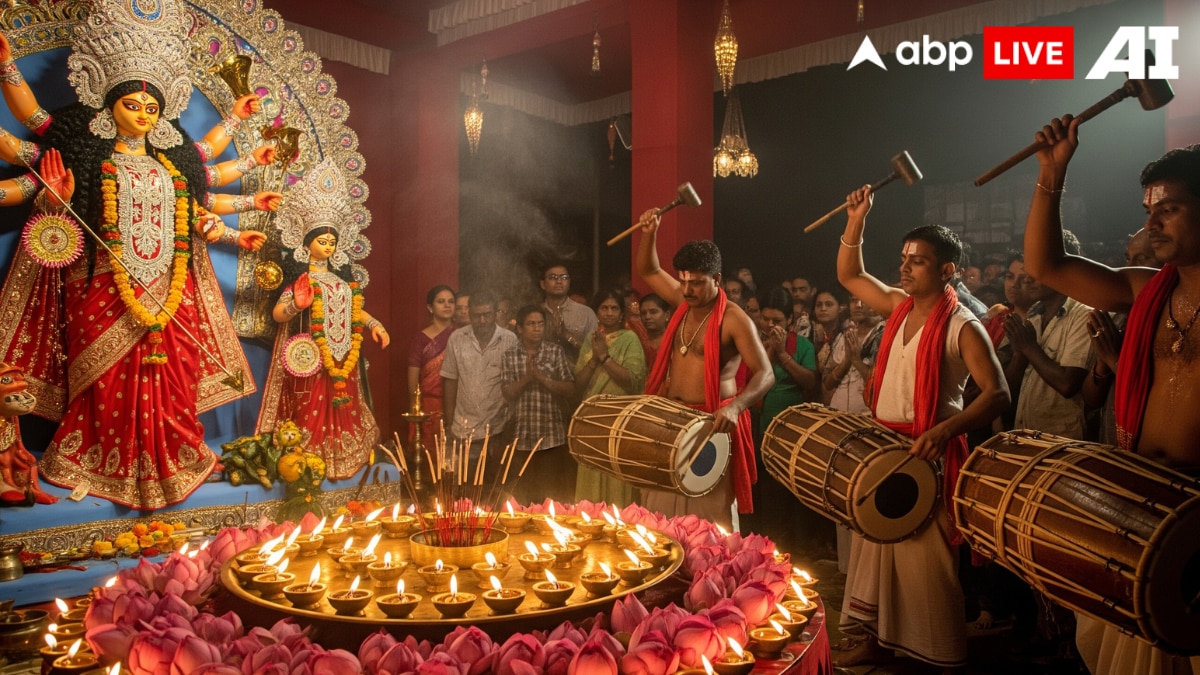 (Image Source: ABPLIVE AI)
(Image Source: ABPLIVE AI) Sandhi Puja is performed at the cusp of Ashtami and Navami. It is considered the most powerful and spiritually charged ritual of Durga Puja. Puja. Legend says it is the moment when Goddess Durga transformed into her fierce form, Chamunda, to destroy the demons Chanda and Munda. During this time, 108 lamps are lit, and 108 lotus flowers are offered to the goddess, accompanied by the rhythmic beats of the dhak. The energy inside pandals becomes electrifying, with devotees often staying up late to witness this divine moment.
Kumari Puja
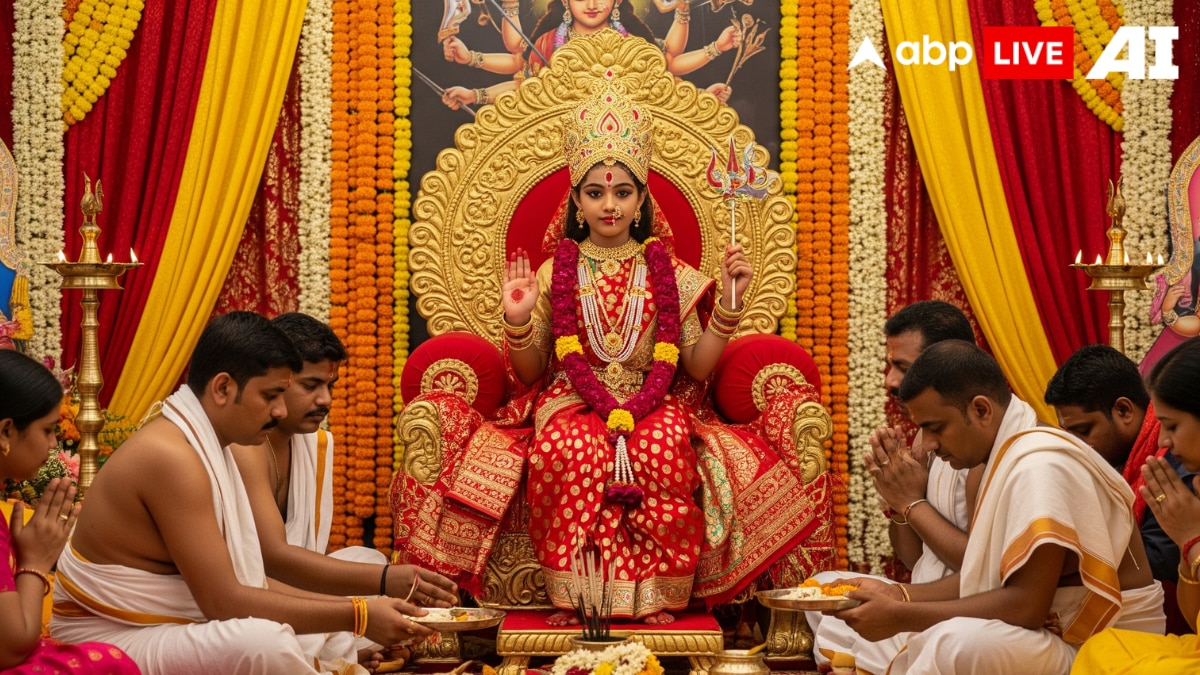 (Image Source: ABPLIVE AI)
(Image Source: ABPLIVE AI) Kumari Puja is a ritual where a young girl us worshipped as a living embodiment of Maa Durga. This tradition is deeply rooted in Shakti worship. It reflects the belief that divinity resides within every woman. The chosen girl is bathed, adorned in traditional attire, and seated on a decorated throne. Beyond its spiritual meaning, Kumari Puja serves as a reminder of respecting and empowering women in society. Priests perform rituals in her honour, while devotees bow to her feet in reverence.
Dhanuchi Naach
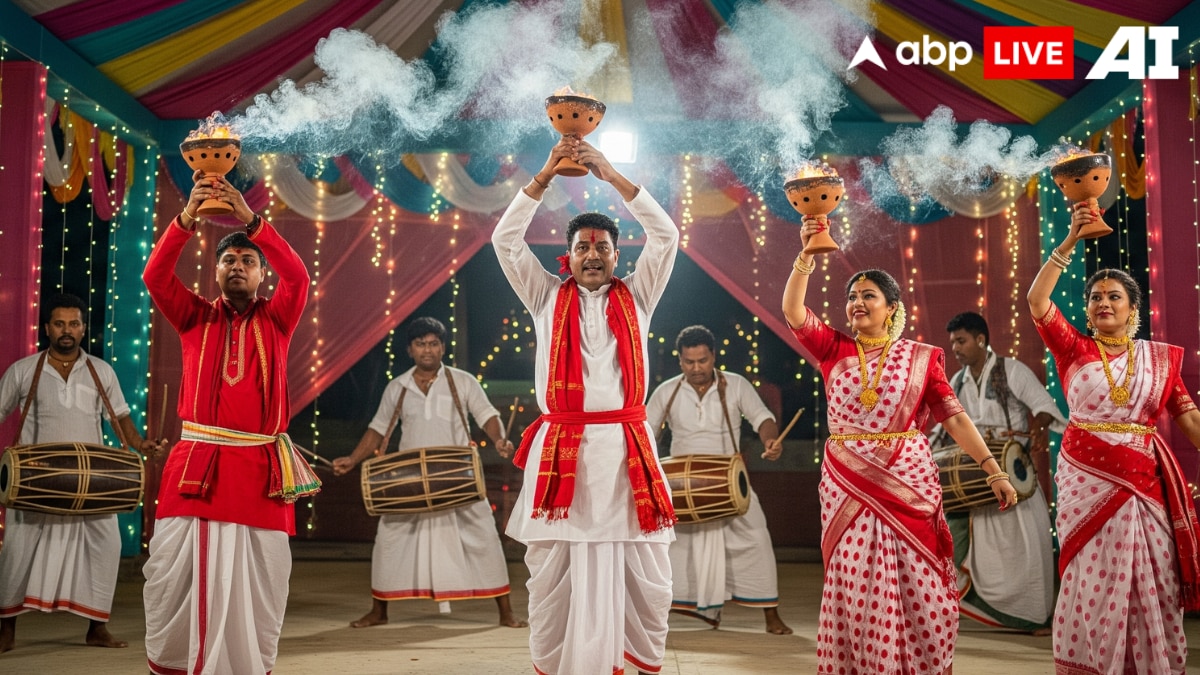 (Image Source: ABPLIVE AI)
(Image Source: ABPLIVE AI) The Dhanuchi Naach is one of the most visually captivating rituals of Durga Puja. It's performed with clay incense burners which is known dhanuchi. Devotees dance in rhythmic steps to the beats of the dhak. The smoky fragrance of burning coconut husk fills the pandal, while dancers twirl with passion, their movements blend of devotion and energy. Dhanuchi dance is not just an offering to the goddess but also a cultural spectacle that embodies the festive spirit.
Sindoor Khela
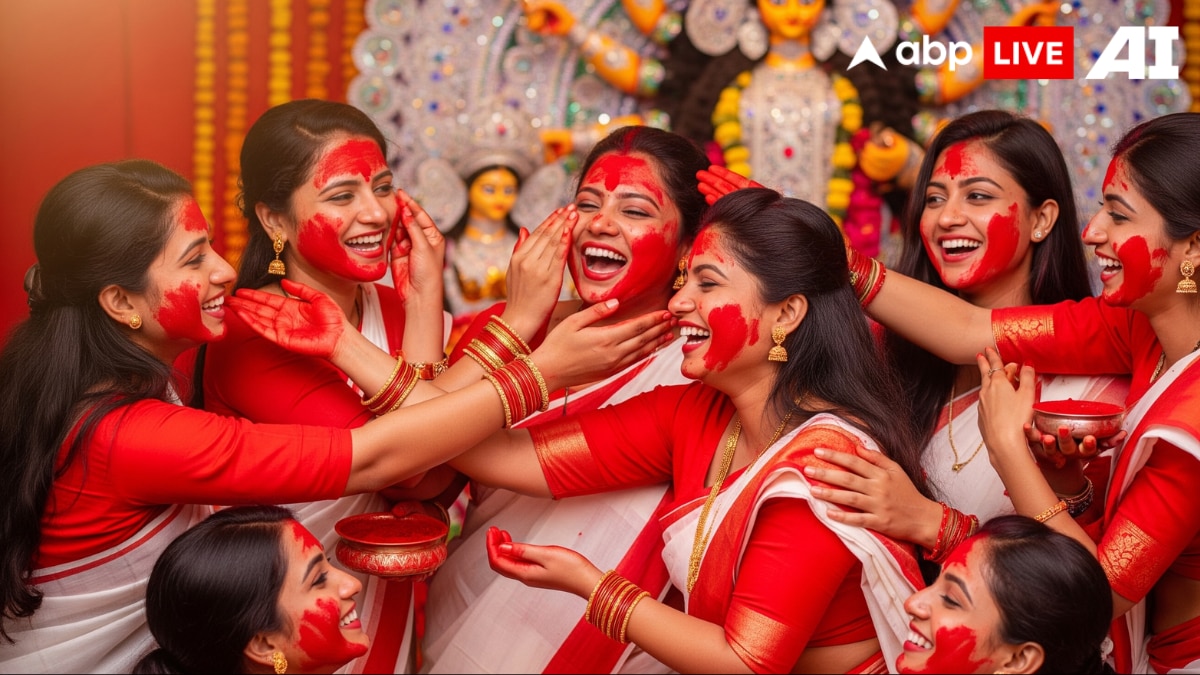 (Image Source: ABPLIVE AI)
(Image Source: ABPLIVE AI) Perhaps the most emotional ritual of Durga Puja is Sindoor Khela. It's celebrated on Dashami, the final day. Married women, dressed in traditional red and white sarees, offer sindoor to the goddess before applying it to each other's foreheads and faces. This ritual symbolises marital bliss, sisterhood, and the power of the feminine energy. The laughter, the colours, and the festive chants fill the atmosphere with both joy and sadness, as devotees prepare to bid farewell to Maa Durga.
Visarjan
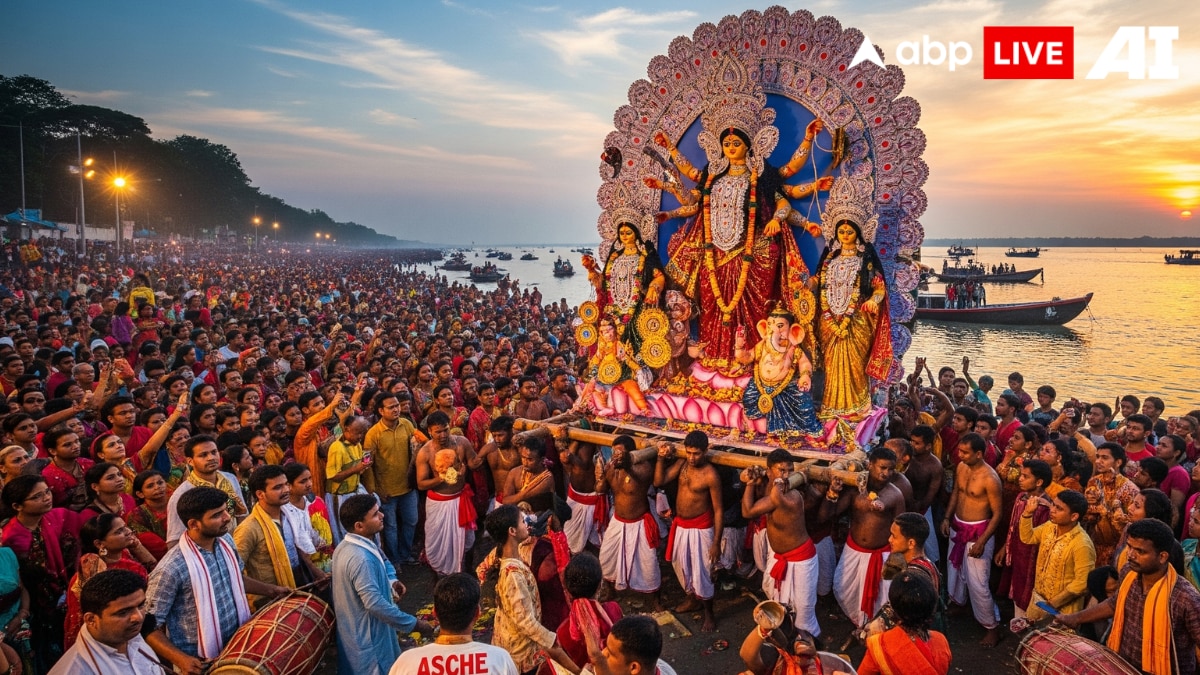 (Image Source: ABPLIVE AI)
(Image Source: ABPLIVE AI) The festival of Durga Puja concludes with Visarjan, where Maa Durga's idol is taken out in grand processios for immersion in rivers or water bodies. The streets echo with chants of “Asche bochor abar hobe," meaning "She will return next year," reflecting the hope and devotion of millions. Drums, conch shells, and dancing crowds accompany the goddess on her journey. Though it marks the end of Durga Puja, the promise of her return ensures that the spirit of the festival never truly fades.
